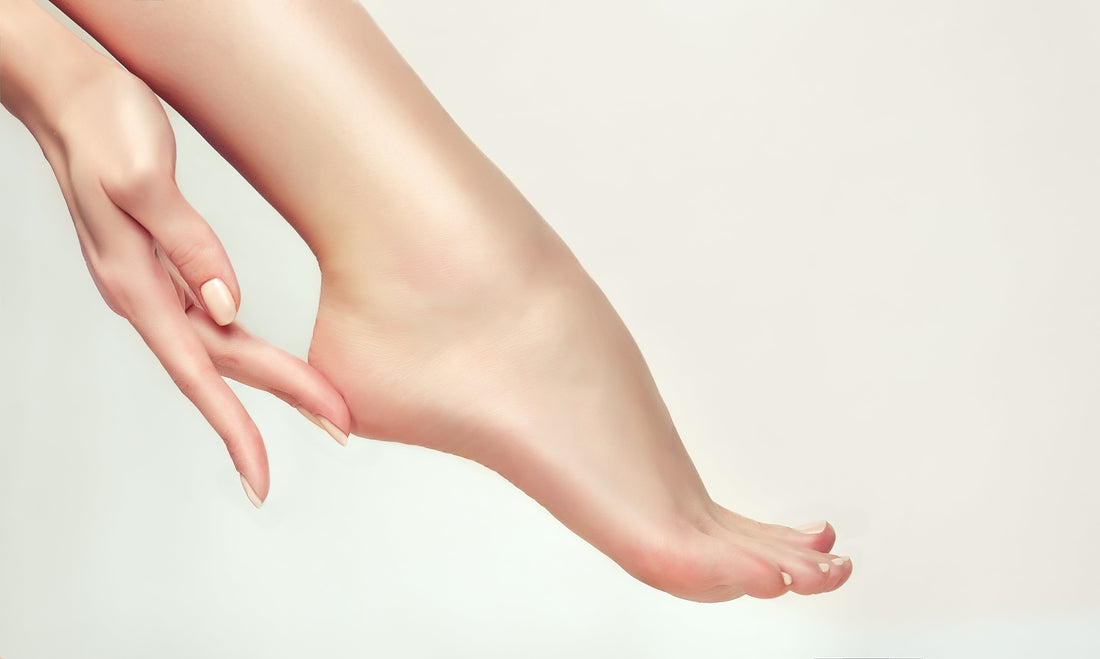Is the climate impacting your feet? Fact is that it is. Lifestyle factors, such as age and activity levels, and medical conditions, such as diabetes, are known to have a significant impact on foot appearance. Additionally, a region's climatic conditions play a significant role too.
In that case, are there some foot issues you just can't avoid if you live in a certain region? The answer is no, thankfully. The right products and regular professional care can help you maintain healthy feet and toenails regardless of the weather. Understanding seasonal foot care needs and how to prevent and/or treat them can make your foot care regimen even more effective.
Areas with Cold Climate
Winters can be extremely cold in some places, such as Russia, Canada, Scandinavian countries, and northern parts of the United States, with temperatures sometimes falling below -30˚C or -22˚F. Your feet can suffer damage due to these frigid temperatures for several reasons.

Air-conditioning
Essentially, modern heating removes moisture from the air, resulting in extremely dry conditions. Consequently, the feet develop dry, rough, and cracked skin - a situation that can easily go overlooked when boots are worn frequently outdoors. In many cases, this results in calluses.
Winter boots
There is a common misconception that dry feet is the only explanation for rough and scratchy skin. But, at times, a bacterial or fungal infection may be responsible for it. If your winter boots make your feet sweat a lot, it can lead to infections.
These infections can lead to dry, callused skin with superficial imperfections that do not resolve despite regular moisturising. Make sure that the boots you choose are roomy and not too tight on the feet.
Climate Zones in Tropical Areas
There are several tropical climate nations, including the Caribbean, Malaysia, Singapore and southern India, that have hot, humid weather all year long. Temperatures range from 18°C to 40°C and humidity levels are high. Here, no one hides their feet. Flip-flops or sandals are the preferred footwear in these regions. The benefits of tropical climates are, however, outweighed by some disadvantages.

Beach life
It is possible to get rough skin and microtears on the soles of your feet on the coast due to sand, salty water, and sunburn. If you are walking barefoot on the beach, you should do so only along the upper waterline where the water is "rinsing" the shore.
Sweaty feet
In hot temperatures, sneaker-clad feet are often sweaty, creating ideal conditions for bacterial and fungal infections.
If you walk barefoot indoors, cleanse your feet after each excursion. Maintain a regular routine of cleaning, drying, and protecting the feet.
Make sure your feet are treated with a product that kills odour-causing bacteria. For example, tea tree oil is known to neutralise foot odour and menthol may prevent your skin from overheating.
Also, beware of itchy and peeling skin on the feet and scaling between the toes. These are all symptoms of fungal infections such as athlete's foot.
Climate Zones that are Dry & Arid
There is very little moisture in the air in dry climate nations, such as Australia, Pakistan, Chile, Nigeria, and Peru.
The arid climate can exacerbate problems associated with dry skin quickly. Foot dryness can cause severe cracks under the big toes and on the heels. In addition, microtears in the skin make the feet more susceptible to bacterial and fungal infection.
In hot, low-humidity weather, you should drink plenty of water to keep your skin hydrated. And moisturise your skin with a product designed for very dry skin.
Zones with Temperate Climate
In a temperate climate, seasons are quite distinct and are four in number, and temperatures and rainfall vary significantly (though not to an extreme). Many countries in the United States and Europe, as well as Cyprus, Italy and Malta, have temperate climates.
How does a temperate climate affect foot health? Feet face a multitude of issues in such regions, with the changing seasons.
In the winter, feet in this region are prone to peeling and bacterial and fungal infections, and in the summer, they may be dehydrated and cracking due to extreme dryness. If you live in a temperate climate zone, professional pedicures are ideal since treatments and products must be suited to the season.
Holistic Foot Care
Calluses can be effectively reduced and the toenails, cuticles, dry keratinized skin, hyperkeratosis (over-thickened skin) and deep cracks, called fissures/rhagades, can be effectively treated with a good foot care routine.
You can enjoy smooth skin at home by regularly moisturising and protecting your feet with products rich in urea, such as Solvblem Daily Moisturizing Formula, which absorbs quickly and locks in moisture. Suitable for even hands and body, this moisturiser is gentle but effective!



